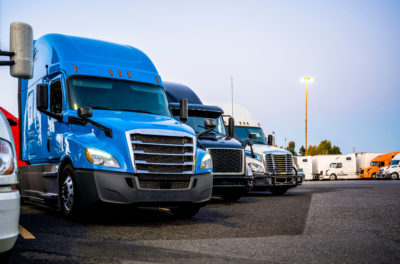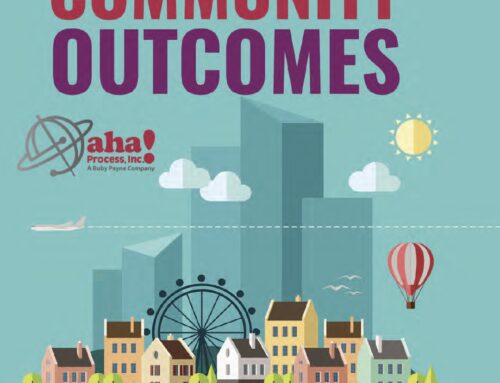 Many Americans are increasingly unable to pay their mortgages or make rent. The numerous reasons for this include continued increases in the cost of housing, caused in part by the COVID-19 pandemic (Duca & Murphy, 2021); drastic jumps in rent amounts (Crockett, 2022); a scarcity of homes for sale; and incomes that are stagnant or even plummeting. While many do not fit the “homeless” stereotype, they are unhoused, and they are forced to be creative in finding places to live. Sometimes their living place is their car, sometimes it is their big rig, and sometimes it is a truck stop.
Many Americans are increasingly unable to pay their mortgages or make rent. The numerous reasons for this include continued increases in the cost of housing, caused in part by the COVID-19 pandemic (Duca & Murphy, 2021); drastic jumps in rent amounts (Crockett, 2022); a scarcity of homes for sale; and incomes that are stagnant or even plummeting. While many do not fit the “homeless” stereotype, they are unhoused, and they are forced to be creative in finding places to live. Sometimes their living place is their car, sometimes it is their big rig, and sometimes it is a truck stop.
I live in Texas, and, until recently, I had not seen much of the United States. My middle child serves in the Air Force in Washington state, and my youngest recently started an internship in Oregon. I delivered my son to Oregon and visited my middle son in Washington, and I took the time to visit 10 states on my drive back to Texas.
During my journey, I was able to view firsthand Ruby Payne’s work regarding the hidden rules of social class. The focal point during my trip was truck stops and how they serve a much larger purpose than merely being places for truckers to refuel and grab a bite. For many, they are home.
The simple joy of truck stop Wi-Fi
Truck stops not only offer professional drivers necessary amenities, such as showers and laundry, but the high point seems to be free Wi-Fi. As I briskly walked through a truck stop on the way to the bathroom, I noticed an elderly couple on their laptop in the restaurant. They were watching a hockey game, and they were both cheering for their team like they were both 20. As they laughed and whooped, I noticed that she used American Sign Language (ASL) when speaking to him. I dated a deaf boy in my youth, and I’ve retained a bit of ASL. I ran into her in the bathroom as she was tightening her thin pigtails and washing her hands, so I started a conversation with her in sign language. She was happy as could be, even though she and her husband lived out of their car. She was excited about the hockey game, the fresh salads the truck stop had just stocked, and deeply in love with her husband of many years.
When I stopped at the same truck stop a week later, the couple was still there. Truck stops are the new homeless shelters for the creative, solution-oriented, marginalized population. Joy can be found inside the truck-stop environment.
Home is a car in a truck stop parking lot
Kristy is a cheerful, 20-something cashier at a Colorado Springs truck stop. She has lived in her car in the parking lot for a year. Her terminally ill husband is on a life-sustaining intravenous line, and the truck stop is near the hospital where he receives treatment. They are homeless but not without a home. Truck stops are the new version of homeless shelters for the marginalized.
Most people are familiar with the front door to fuel stations where we pay for gas and buy sodas, but there is a back door for truck drivers who drive 18-wheelers. Truck stops have showers, laundry facilities, lounges with recliners in front of televisions, and employees trained to make those on the road feel like they are arriving home. Kristy is one of many whom I met who utilize these resources to survive poverty. She has access to all the amenities for free, as well as a daily meal allowance of 10 dollars. She and her husband share two meals daily within that budget. Without the training provided by aha! Process, I would have overlooked her as just a cashier. In reality, she is a creative, solution-oriented rock star.
Living in a truck
Large truck stops serve as homeless shelters for many people who are giving poverty a push back. The showers are clean and very similar to hotels, and they offer towels and soap from a dispenser. While wages are stable, the cost of living is rising, making this a way of life for many in poverty. I sat in a Denny’s restaurant inside a truck stop while sipping coffee and waiting for eggs, and I eavesdropped on a conversation in the next booth. A job interview between a truck driver and a trucking company was taking place. The driver sounded qualified and experienced. His wife rode with him in his travels, and he was simply trying to negotiate higher pay than he currently earned. At the end of the interview, he was offered the position. His last question to his potential new boss was if the couple could stay in the truck during routine mandatory maintenance. The couple did not have a home and lived in the 18-wheeler full-time. Truck stops offered everything the couple needed, and this was their way of staying out of a homeless shelter.
An enlightening encounter in El Paso
As I headed into El Paso, I expected to hear Spanish and to taste tamales and enchiladas. I was surprised when I heard both German and Low Dutch being spoken in area restaurants and truck stops. The sociologist in me made me stop and ask questions. This was the result of Ruby Payne’s work regarding the hidden rules of social class. The sociology research conducted by aha! Process examines subcultures in America and how each subculture has its own hidden rules, or traditions that are not understood by outsiders. These hidden rules aid in developing community requirements and expectations. I expected Latinos at the border, and I found Mennonites. The Mennonite community is kind, pacifist, and accommodating.
A man’s truck broke down and limped into the truck stop. The truck driver called a local diesel mechanic who said the parts would be available to fix the truck in 12 hours. The Mennonite mechanic called home and had his wife meet him at the truck stop, gave the truck driver his personal truck while the other truck was in the shop, and provided directions to the best breakfast in town. The mechanic and his wife left in their company truck.
Without insight into subcultures in America, each with their own hidden rules, this would look like insane behavior. Giving a stranger who drives an 18-wheeler your personal vehicle while repairs are made to a commercial truck almost seems illogical unless you were raised Mennonite and were taught to treat others with this level of generosity. aha! Process opened my eyes to see and appreciate subcultures within different social classes. By the way, the enchiladas were terrific.
References
Badger & Bui (2021). Where have all the houses gone? The New York Times, February 26, 2021.
Crockett (2022). Why is rent skyrocketing? The Hustle, August 6, 2022.








